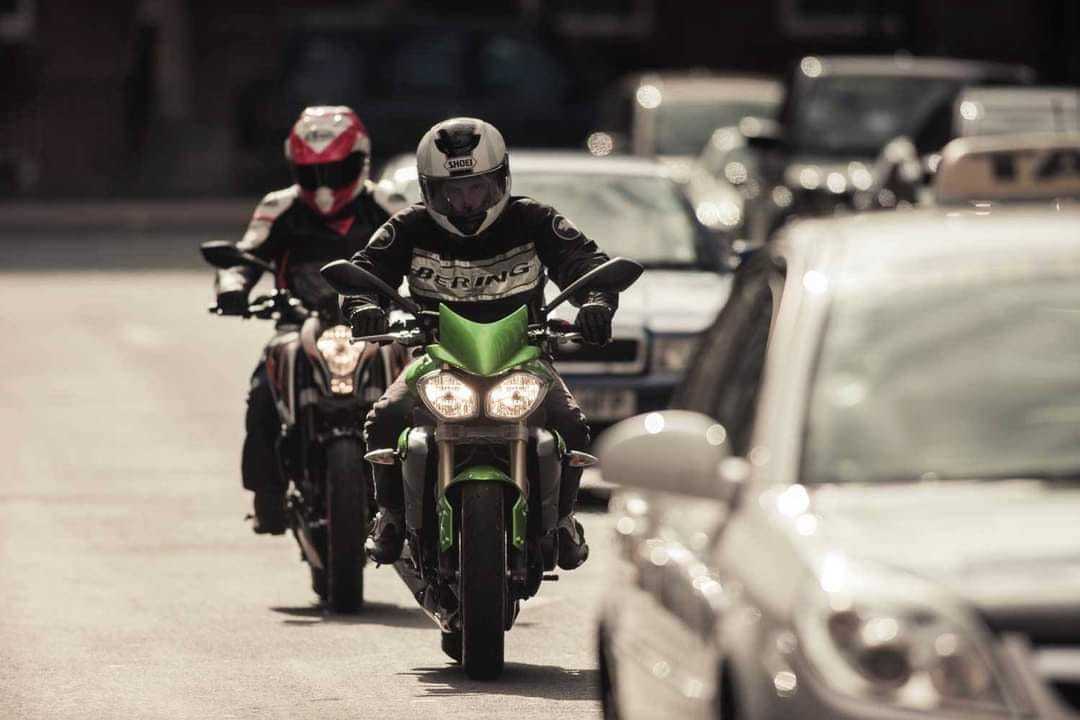Ten Ways to Avoid Crashes on a Motorcycle
1. This is the cardinal rule: Always assume that every motorist on the road will do something wrong that will hurt or kill a motorcyclist. That guy driving toward the intersection? Assume he’s going to turn left in front of the approaching motorcycle. That woman sitting at the intersection? Assume she’s going to pull out just as the motorcycle reaches the intersection. That guy parked along the curb with his motor running? Assume he’s going to pull out into traffic just as the motorcycle is reaching the parked car. And so on…
2. Slow down when approaching intersections, even if no other motorists are visible. Roadways approaching intersections, especially in town, often cannot be properly viewed until right on them. Assume there are vehicles approaching from both directions at intersections, and that they will blow through the stop signs. By slowing down before the intersection, the motorcyclist is better prepared to deal with this unexpected danger.
3. DO NOT rely on the other driver’s eyes. It may look like the other driver is staring right at the motorcyclist. Many times, drivers are looking right “through” the motorcyclist, focusing on the larger vehicles in traffic. In this situation, the motorcycle becomes “invisible” to the motorist.
4. DO rely on the other motorist’s wheels. Instead of looking at the eyes of a motorist stopped at an intersection, look at the wheels of the car. The wheels do not lie. If the wheels start to move, the motorcyclist should brake as though the vehicle is going to pull out in front of the motorcycle.
5. When a motorcycle and car are approaching an intersection from opposite directions, assume that the car is going to make a lethal left in front of the motorcycle. Slow down. Cover the brakes. Be ready to pound the brakes if the car shows any sign of turning. Remember, look at the wheels, not the eyes.
6. Whenever possible, a motorcyclist should go through intersections with a vehicle beside the motorcycle. That way, if somebody does run a red light or stop sign, the motorcycle is protected, at least from one direction.
7. Check tire pressure and tire condition before riding. Improperly inflated tires can lead to tire failure. At high speeds, tire failure can be fatal.
8. If a car is following a motorcycle too closely (closer than three seconds behind), try waving the car back. If the car won’t move back to a proper following distance, pull over to the shoulder and let them by. If something happens that requires hard braking by a motorcycle with a car following too closely, chances are greatly increased that the car rear-ends the motorcycle. Remember, in a crash, the car (almost) always wins.
9. If a car passes and then pulls back in front of the motorcycle too closely (again, closer than a three-second gap), brake gently and back off to create the three-second safety buffer. Anything closer, and the motorcyclist doesn’t get enough time to react to things that “pop out” from under the car, like dead animals, chunks of tire, etc.
10. Don’t follow vehicles too closely. Keep that minimum three-second safety buffer between the motorcycle and the traffic in front. Any closer and the risk of rear-ending the vehicle in front in the event of a sudden slow-down goes up dramatically. Those folks in the vehicle ahead may be nice people, but the motorcyclist does not want to meet them by coming through the back window.




David Wilsom
Available at: https://besttowingusa.com/de-l....a-cruz/professional- Professional Car Towing Services in Mesa AZ
Delete Comment
Are you sure that you want to delete this comment ?
David Wilsom
Delete Comment
Are you sure that you want to delete this comment ?
David Wilsom
Delete Comment
Are you sure that you want to delete this comment ?